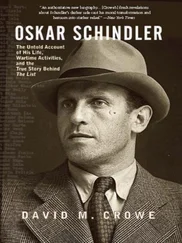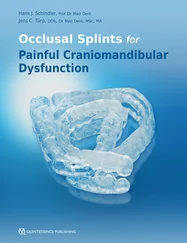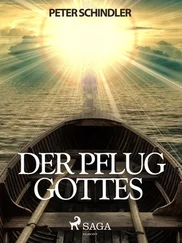He traveled across Cracow by streetcar and walked to his old factory in Zablocie. A few Polish caretakers were still there, and from the upstairs office he called Brinnlitz and told Emilie that he was free.
Moshe Bejski, a Brinnlitz draftsman, remembers the confusion while Oskar was away—the rumors, all the questions about what it meant. But Stern and Maurice Finder, Adam Garde and others had consulted Emilie about food, about work arrangements, about the provision of bunks. They were the first to discover that Emilie was no mere passenger. She was not a happy woman, and her unhappiness was compounded by Bureau V’s arrest of Oskar. It must have seemed cruel that the SS should intrude on this reunion before it had got properly started. But it was clear to Stern and the others that she was not there, keeping house in that little apartment on the ground floor, purely out of wifely duty. There was what you could call an ideological commitment too. A picture of Jesus with His heart exposed and in flames hung on a wall of the apartment. Stern had seen the same design in the houses of Polish Catholics. But there had been no ornament of that kind in either of Oskar’s Cracow apartments. The Jesus of the exposed heart did not always reassure when you saw it in Polish kitchens. In Emilie’s apartment, however, it hung like a promise, a personal one. Emilie’s.
Early in November, her husband came back by train. He was unshaven and smelly from his imprisonment. He was amazed to find that the women were still in Auschwitz-Birkenau.
In planet Auschwitz, where the Schindler women moved as warily, as full of dread as any space travelers, Rudolf Hóss ruled as founder, builder, presiding genius. Readers of William Styron’s novel Sophie’s Choice encountered him as the master of Sophie— a very different sort of master than Amon was to Helen Hirsch; a more detached, mannerly, and sane man; yet still the unflagging priest of that cannibal province. Though in the 1920’s he had murdered a Ruhr schoolteacher for informing on a German activist and had done time for the crime, he never murdered any Auschwitz prisoner by his own hand. He saw himself instead as a technician. As champion of Zyklon B, the hydrogen cyanide pellets which gave off fumes when exposed to air, he had engaged in a long personal and scientific conflict with his rival, Kriminalkommissar Christian Wirth, who had jurisdiction over the Bełżec camp and who was the head of the carbon monoxide school. There had been an awful day at Bełżec, which the SS chemical officer Kurt Gerstein had witnessed, when Kommissar Wirth’s method took three hours to finish a party of Jewish males packed into the chambers. That Hóss had backed the more efficient technology is partially attested to by the continuous growth of Auschwitz and the decline of Bełżec. By 1943, when Rudolf Hóss left Auschwitz to do a stint as Deputy Chief of Section D in Oranienburg, the place was already something more than a camp. It was even more than a wonder of organization. It was a phenomenon. The moral universe had not so much decayed here. It had been inverted, like some black hole, under the pressure of all the earth’s malice—a place where tribes and histories were sucked in and vaporized, and language flew inside out. The underground chambers were named “disinfection cellars,” the aboveground chambers “bathhouses,” and Oberscharführer Moll, whose task it was to order the insertion of the blue crystals into the roofs of the “cellars,” the walls of the “bathhouses,” customarily cried to his assistants, “All right, let’s give them something to chew on.” Hóss had returned to Auschwitz in May 1944 and presided over the entire camp at the time the Schindler women occupied a barracks in Birkenau, so close to the whimsical Oberscharführer Moll. According to the Schindler mythology, it was Hóss himself with whom Oskar wrestled for his 300 women. Certainly Oskar had telephone conversations and other commerce with Hóss. But he also had to deal with Sturmbannführer Fritz Hartjenstein, Commandant of Auschwitz II—THAT is, of Auschwitz-Birkenau—and with Untersturmführer Franz Hóssler, the young man in charge, in that great city, of the suburb of women.
What is certain is that Oskar now sent a young woman with a suitcase full of liquor, ham, and diamonds to make a deal with these functionaries. Some say that Oskar then followed up the girl’s visit in person, taking with him an associate, an influential officer in the S.a. (the Sturmabteilung, or Storm Troops), Standartenführer Peltze, who, according to what Oskar later told his friends, was a British agent. Others claim that Oskar stayed away from Auschwitz himself as a matter of strategy and went to Oranienburg instead, and to the Armaments Inspectorate in Berlin, to try to put pressure on Hóss and his associates from that end.
The story as Stern would tell it years later in a public speech in Tel Aviv is as follows. After Oskar’s release from prison, Stern approached Schindler and—”under the pressure of some of my comrades”—begged Oskar to do something decisive about the women ensnared in Auschwitz. During this conference, one of Oskar’s secretaries came in—Stern does not say which one. Schindler considered the girl and pointed to one of his fingers, which sported a large diamond ring. He asked the girl whether she would like this rather hefty piece of jewelry. According to Stern, the girl got very excited. Stern quotes Oskar as saying, “Take the list of the women; pack a suitcase with the best food and liquor you can find in my kitchen. Then go to Auschwitz. You know the Commandant has a penchant for pretty women. If you bring it off, you’ll get this diamond. And more still.”
It is a scene, a speech worthy of one of those events in the Old Testament when for the good of the tribe a woman is offered to the invader. It is also a Central European scene, with its gross, corruscating diamonds and its proposed transaction of the flesh.
According to Stern, the secretary went. When she did not return within two days, Schindler himself— in the company of the obscure Peltze—went to settle the matter.
According to Schindler mythology, Oskar did send a girlfriend of his to sleep with the Commandant—be that Hóss, Hartjenstein, or Hóssler—and leave diamonds on the pillow. While some, like Stern, say it was “one of his secretaries,”
others name an Aufseher, a pretty blond SS girl, ultimately a girlfriend of Oskar’s and part of the Brinnlitz garrison. But this girl, it seems, was still in Auschwitz anyhow, together with the Schindlerfrauen. According to Emilie Schindler herself, the emissary was a girl of twenty-two or twenty-three. She was a native of Zwittau, and her father was an old friend of the Schindler family. She had recently returned from occupied Russia, where she’d worked as a secretary in the German administration. She was a good friend of Emilie’s, and volunteered for the task. It is unlikely that Oskar would demand a sexual sacrifice of a friend of the family. Even though he was a brigand in these matters, that side of the story is certainly myth. We do not know the extent of the girl’s transactions with the officers of Auschwitz. We know only that she approached the dreadful kingdom and dealt courageously.
Oskar later said that in his own dealings with the rulers of necropolis Auschwitz, he was offered the old temptation. The women have been here some weeks now. They won’t be worth much as labor anymore. Why don’t you forget these three hundred? We’ll cut another three hundred for you, out of the endless herd. In 1942, an SS NCO at Prokocim station had pushed the same idea at Oskar. Don’t get stuck on these particular names, Herr Direktor. Now as at Prokocim, Oskar pursued his usual line. There are irreplaceable skilled munitions workers. I have trained them myself over a period of years. They represent skills I cannot quickly replace. The names I know, that is, are the names I know.
Читать дальше












